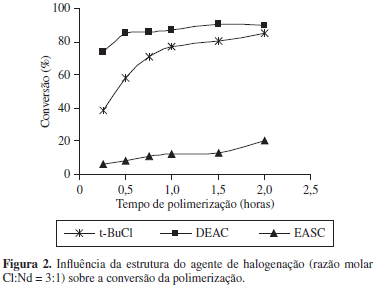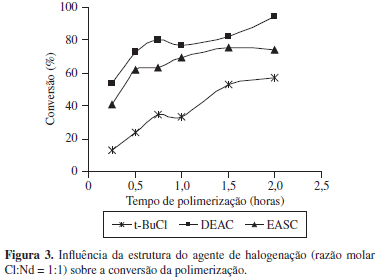In this work catalyst systems consisting of diisobutylaluminium hydride (DIBAH), neodymium versatate (NdV) and a chlorinating agent were employed to study the influence of the chloride source and Cl:Nd molar ratio on 1,3-butadiene polymerization and polybutadiene's characteristics (molecular weight and microstructure). The chloride sources studied were t-butyl chloride, ethylaluminium sesquichloride (EASC) and diethylaluminium chloride (DEAC). The Cl:Nd molar ratios used were 1:1, 3:1 e 5:1 for t-butyl chloride; 0.5:1, 1:1 and 3:1 for EASC and 1:1, 1.5:1, 3:1 and 5:1 for DEAC. A maximum value of Cl:Nd molar ratio exists. Moreover, DEAC showed to be more reactive than EASC and t-BuCl but t-BuCl produced higher molecular weight and cis-1,4 units contents.
Ziegler-Natta catalysts; neodymium; chlorinating agent; high cis-polybutadiene






